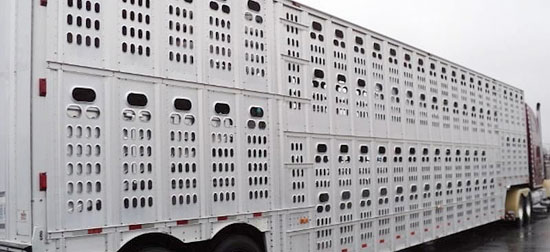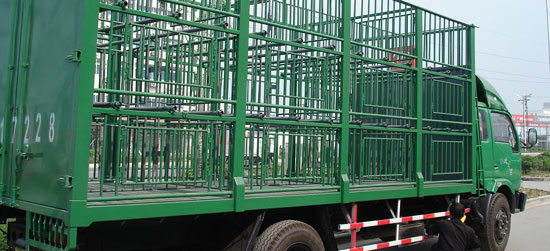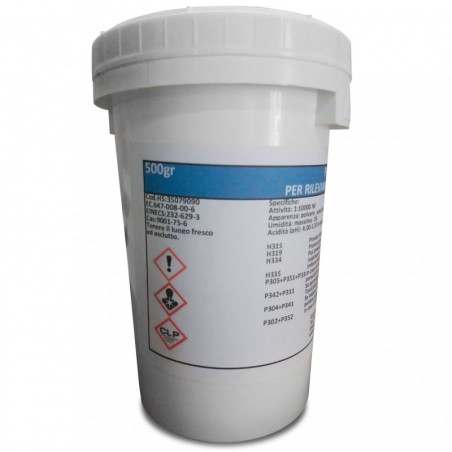1. What can we lose in transport ?
Loading pigs is a task that, unfortunately, we give little importance to. We don’t usually realize that loosing something at this point is tantamount to losing a year’s worth of work, and worse yet is the economic loss.

In this article we will take a look at everything we can loose with a bad transport experience.

1.1. Loss of the pig (death)
The death of an animal is the most extreme loss. This happens when the pig is confronted with a stressful situation it cannot adapt to and suffers a circulatory system collapse.
1.2. Losses in carcass
These will be due to partial or complete seizure of the carcass. Normally seizures are due to scratches on the skin, bruises, or deeper wounds.
One might think that this is of little importance since the skin is of little vale, but this is not case. We can lose the price of its weight (approximately 4 kilograms), but also, according to the final destination of the piece, the skin is of more value since it takes value away from the piece as a whole. The clearest example would be ham.
When lesions are serious, like bruises, wounds, etc. it is possible that the whole carcass will be seized.
1.3. Losses in meat
If we have meat that is in bad condition we will have to make more effort technologically in order to get value out of it or, in the worse case, we won’t be able to use it at all.
Stress factors during loading and transport can end in muscular acidification and, if it persists, can even lead to death (Ritter, 2009). This acidity is what results in a pH lower than 5,4 after 24 h. This meat is usually of little use to sell ‘fresh’ since it has lost water, although one can take advantage and find some way to work it into cooked products. This meat is also unusable for cured products.
1.4. The human factor
Although there is a large amount of information on loss of animal parts, there isn’t much information on the human factor and its importance in transport.
1.5. The whole farm (biosecurity)
In the case of a farm suffering the appearance of notifiable disease, where it has to proceed to slaughter all of its animals, we would have to consider the following points in order to evaluate losses:
- The cost of slaughtering all livestock.
- The cost of maintaining the farm during its emptying.
- The cost of beginning production again.
- The loss of revenue during the period of inactivity.
In a better scenario, a farm can suffer the appearance of a disease that isn’t notifiable but important economic losses still occur.
2. The economic value of possible losses
In order to evaluate losses in transport we have to keep the whole value chain in mind, starting with losses at production level up to losses of finished products.
The following table shows average loss values per seizure of different pieces at different points in the process. Costs at production level are based on Sip-Consultors database, and to evaluate the price at slaughter and the retail price we have used data from the food monitors, MARM.

| Production | Slaughter | Retail | |
| Seizure of skin: head | 0,33 | 1,6 | 8 |
| Seizure of skin: belly | 0,44 | 4,875 | 10,75 |
| Seizure of skin: loin | 0,88 | 19,2 | 44 |
| Seizure of skin: ham | 0,66 | 18,6 | 120 |
| Seizure: head | 4,4 | 1,6 | 8 |
| Seizure: belly | 2,75 | 4,875 | 10,75 |
| Seizure: loin | 8,8 | 19,2 | 44 |
| Seizure: ham | 11 | 18,6 | 120 |
| Seizure: all skin | 4,4 | 15.2 | 18 |
| Seizure: entire animal | 88 | 208 | 41 |
We can see that the possible losses go from a minimum value of 0,33 € at slaughter and up to 416 € at retail.
There are many articles that discuss losses suffered in transport, but all refer to losses in production and not the actual value of loss. In this sense losses oscillate between 0,05 % (Riches, 1996) and 2,39 % (Lewis, 2006).
Considering losses in production it is estimated that in 2006 in the USA 46 million dollars were lost (Ritter, 2009).
Looking at the range of variability, it is interesting to be able to put an average value on these losses, which we put at 0,22 % due to dead animals and 0,44 % for those that don’t sell, a total of 0,66 % (Ritter, 2009).
| Country | Year | % Deaths | Reference |
| Germany |
2003 2002 2001 2000 1999 1993 |
0,10 0,10 0,13 0,15 0,17 0,50 |
(Werner et al 2007) (Werner et al 2007) (Werner et al 2007) (Werner et al 2007) (Werner et al 2007) (Christensen, 1994) |
| Italy | 1993 | 0,10 | (Christensen, 1994) |
| Holland |
1993 1980 1976 1976 1972 1968 1960 |
0,16 0,21 0,30 0,38 0,52 0,47 0,15 |
(Christensen, 1994) (Corstiaensen 1977) (van Logtestijn 1982) (van Logtestijn 1982) (van Logtestijn 1982) (van Logtestijn 1982) (van Logtestijn 1982) |
| Portugal | 1993 | 0,16 | (Christensen, 1994) |
| Spain | 1992-1994 |
0,33 0,15 0,22 |
(Gonsalvez 2006) (Palacio 1996) (Guardia 1996) |
| UK |
1994 1993 1991-1992 1961-1973 |
0,05 0,09 0,07 0,10 |
(Ritches 1996) (Christensen, 1994) (Warris and Brown) (Allen 1979) |
| Belgium | 1993 | 0,30 | (Christensen, 1994) |
| Canada |
2004 2004 2003 2003 2001 1996 |
0,12 0,10 0,07 0,09 0,17 0,14 |
(Haley, 2001) (Haley, 2001) (Sunstrum, 2006) (Benjamin, 2005) (Haley, 2001) (Murray 2000) |
| Czech Republic | 1997-2004 | 0,11 | (Vecerek et al 2006) |
| Denmark |
1998-2002 1996 1993 1984 1978 |
0,02 0,02 0,03 0,12 0,12 |
(Barton Gade et al 2007) (Barton Gade et al 1997) (Christensen, 1994) (Barton Gade et al 2007) (Barton Gade et al 2007) |
| France |
1997 1995 |
0,07 0,08 |
(Colleu and Chevillon 1999) (Colleu and Chevillon 1999) |
Ritter, 2009
The variability of results is very high, oscillating based on country and year (0,07 % to 0,5 %).
Losses in transport can be due to multiple causes, among the most important we will highlight are space, pathologies, distance, temperature, season, loading and transport management as well as truck design.

3. Conclusions
There is a lot of work to carry out in many countries in order to reduce occasional losses in transport.
The results we have seen in this report tell us that currently in areas that work with good trucks and in good conditions, can lose up to 200 € per truck (considering a 2% loss), and this is without taking into account the quality of the carcass and the retail value of these animals, where the value reaches up to 800 € per truck; devastating results.




